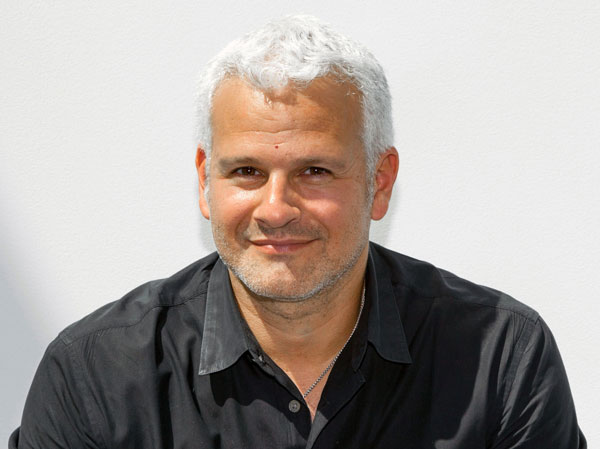Participants 101 - Part 4 - The other side
03 March 2016
In our final part of this series on what taking part in research is and how to do it, we are taking a behind the scenes look at the life of scientists and what it means to conduct a research study. This will give you an idea of where your participation fits in with the wider research study.
Conducting research
What you see on Call for Participants is only a small part of the research cycle. It all begins with the scientists identifying a problem that they wish to solve, or something that we yet don't know about. This leads to a research question. In psychology for example, think along the lines of: "What makes us feel different moods?" or "Where does our personality come from?"

A lot of research goes into getting to the point where you can even ask the question. There is a lot of knowledge out there and researchers need to understand where their interests and questions fit in. Research knowledge most commonly takes the forms of conference proceedings and journal articles, which explain the discoveries other researchers have made and how they did it. If you want to get to know these a bit better, take a look at google scholar where you can search for many of the articles available online.
When the researcher knows their research question, they begin to design experiments that answer the question. Often they form a hypothesis, for example, "I think our personality comes from a specific part in our brains," and then test it to see whether it is true. And this is where you come in. Many research areas, notably psychology, require human participants to observe or perform test on to prove the hypothesis. In other cases, think biology, or engineering, the scientist may never leave the lab, and you will only know about their work when if becomes a commercial product and you buy it.

After the research experiment is over and all data has been collected, the researcher analyses it using statistical methods or qualitative methods. This gives the researcher the answer to their original question, which they will then submit to a conference or a journal, that we spoke about earlier, and the whole circle starts again.
Meet a scientist

Dr. Adam Gazzaley
At this stage, the whole concept might seem a bit alien to you, that's okay. In reality, scientists are just the same as you and me. Earlier we brought the example of a hypothesis about personality coming from a part of the brain. This field is part of the study of nervous systems and is called neurology. Dr. Adam Gazzaley is a neurologist and his research focuses on cognition - the brain's processes that take care of learning, thought, and sensing. His team is building tools to keep exercising our brains as we get older.
You can listen to this great People Behind the Science podcast with him to find out more about somebody working in this field, get a behind the scenes glimpse into the life of a neurologist, and hear about how Adam ended up studying brains because he was fascinated by how a water gun worked.
If you are interested in hearing from other scientists from different fields, be sure to check out the whole People Behind the Science podcast. It's a great listen if you want to hear from Nobel prize winners, people working with chimps (let's be honest, who doesn't want to hear that), or other fascinating scientists.

Other episodes from People Behind the Science
Get involved
And since we've been talking about brains and cognition throughout this post, why not take part in some cognition research as well:
-

Worldviews, Cognition, and Well-Being
Swinburne University of Technology, AU
The main aim of this study is to investigate how different worldview belief systems relate to different thinking styles and various aspects of well-being. This research has applications for psychological practice, particularly for therapies relating to core beliefs.
- 30 min(s) to complete
- Prize Draw $250
- Online Questionnaire
- Online
17 February 2016 Requirements- Anyone over 18 years.
-

Conscious Awareness, Memory, and Metacognition
Keele University, GB
This study takes 15-20 minutes to complete and looks at the effects of completing different cognitive tasks and conscious awareness on memory and metacognition.
- 20 min(s) to complete
- Sincere Gratitude
- Online Questionnaire
- Online
14 February 2016 Requirements- At least 18 years old.
-

Stress and decision-making brain imaging study
University College London, GB
Are you currently feeling depressed/down and/or anxious?
We are looking for volunteers for a research study that aims to increase our knowledge about the effects of stress (which is important in many mental health problems), and how it can affect how people think and behave.
It will take place at the UCL Institute of Cognitive Neuroscience, 17 Queen Square, London. It is a two-part study (each part will be completed on different days).
Compensation for both sessions is about £22.5.- 2.5 hour(s) to complete
- Cash ~ £22.5.
- Interview and brain scan
- Alexandra House, 17 Queen Square, London WC1N 3AR, UK
10 February 2016 Requirements- Currently experiencing a period of persistent LOW MOOD and/or feeling ANXIOUS a lot of the time.
- Aged between 18 - 65.
-

CRiB study: Cognitive Remediation for Bipolar Disorder
King's College London, GB
We are investigating a new psychological therapy for people with bipolar disorder, called Cognitive Remediation Therapy (CRT), and are looking for volunteers to take part in a research study.
All information remains confidential and volunteers will receive £60 payment at the end of the study, to compensate for your time and travel expenses.
If you are interested, please contact us via email, or leave a message with your name and contact details on: 020 7848 5305- 6 month(s) to complete
- £60
- Feasibility study
- King's College London, De Crespigny Park, Camberwell, London SE5 8AF, UK
29 January 2016 Requirements- Aged 18-65 years
- Diagnosis of bipolar disorder- type I
- Currently not experiencing disabling symptoms of depression or mania
